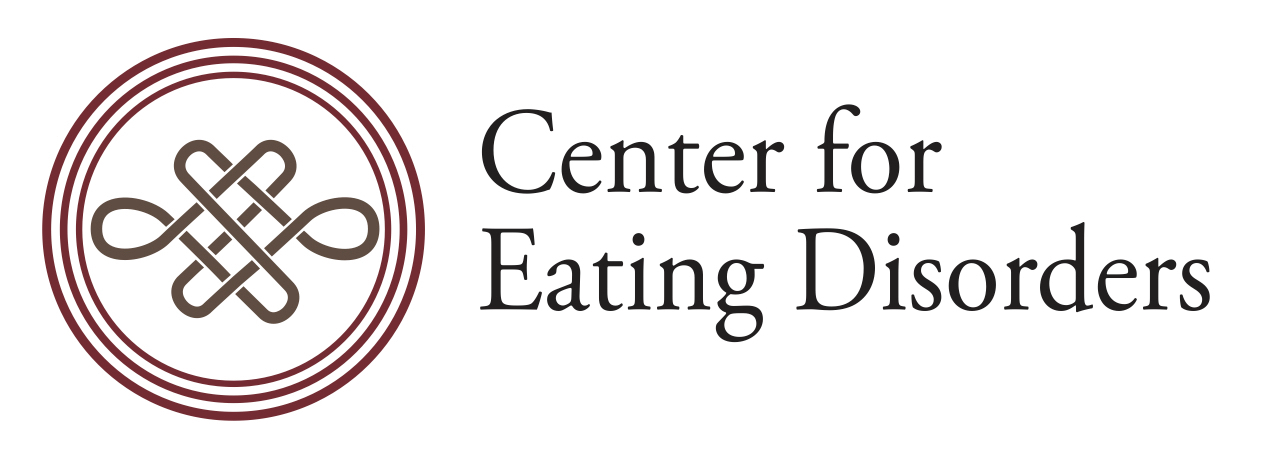Eating disorders are not a choice. They are complex illnesses with biological, psychological, and environmental causes. It is important to seek help as early in the disease process as possible to provide the best opportunity for recovery. The Center for Eating Disorders is dedicated to providing the highest quality, evidence-based care to offer each person we treat the best chance at recovery.

Eating disorders are...
from www.aedweb.org
Persistent patterns of unhealthy eating or dieting behavior. These patterns of eating behavior are associated with emotional, physical, and social distress. Eating disorders do not discriminate on the basis of gender, age, or race. They can be found in both genders, all age groups, and across a wide variety of races and ethnic backgrounds.
Although there are formal guidelines that health care professionals use to diagnose eating disorders [Diagnostic and Statistical Manual of Mental Disorders, Fourth Edition. Text Revision (DSM-IV-TR)(American Psychiatric Association, 2000)], unhealthy eating behaviors exist on a continuum. Even if a person does not meet formal criteria for an eating disorder, she or he may be experiencing unhealthy eating behaviors that cause substantial distress and may be detrimental to both physical and psychological health.
For other sites addressing basic facts and information about eating disorders visit our Resources page.
What is Anorexia Nervosa?
Individuals with anorexia nervosa are unable to maintain a body weight that is normal or expectable for their age and height (most clinicians use 85% of normal weight as a guide). Individuals with anorexia nervosa typically display a pronounced fear of weight gain and a dread of becoming fat although they are dramatically underweight. Concerns and perceptions about their weight have a extremely powerful influence and impact on their self-evaluation. The seriousness of the weight loss and its physical effects is minimized or denied (women with the diagnosis of anorexia nervosa have missed at least three consecutive menstrual cycles).
Diagnostic criteria of anorexia nervosa include two subtypes of the disorder that describe two distinct behavioral patterns. Individuals with the Restricting Type maintain their low body weight purely by restricting food intake and increased activity (i.e. compulsive exercise). Those with the Binge-Eating/Purging Type usually restrict their food intake but also regularly engage in binge eating and/or purging behaviors (i.e. self-induced vomiting or the misuse of laxatives, diuretics or enemas). Binge-Eating/Purging Type of Anorexia Nervosa is also frequently associated with other impulse control problems and mood disorders.
What is Bulimia Nervosa?
Individuals with bulimia nervosa engage in binge-eating episodes which are marked by eating large amounts of food, usually in a discrete period of time, and feeling out of control while doing so. The sense of being out of control is what distinguishes binge-eating from regular overeating. Binge eating is followed by compensatory behaviors such as self-induced vomiting, misuse of laxatives, enemas, diuretics, severe caloric restriction, or excessive exercising.
Individuals with bulimia nervosa are also deeply preoccupied with body shape and weight, upon which they base their feelings of self-worth.
Formal diagnostic criteria for bulimia nervosa note that binge eating and engaging in inappropriate compensatory behaviors occurs at least twice weekly for at least three months. However, regardless of frequency, these behaviors are concerning and can have adverse physical and psychological consequences.
There are also two subtypes of bulimia nervosa. The purging type includes those individuals who self-induce vomiting or use of laxatives, diuretics, or enemas. The non-purging type refers to those who compensate through excessive exercising or dietary fasting.
What is Binge Eating Disorder?
Individuals with binge eating disorder (BED) engage in binge eating, but do not regularly use inappropriate compensatory weight control behaviors such as fasting or purging to lose weight. The binge eating may involve rapid consumption of food, uncomfortable fullness after eating, and eating large amounts of food when not hungry. Feelings of shame and embarrassment are prominent. Binge Eating Disorder is often, but not always, associated with overweight and obesity. Previous terms used to describe these problems included compulsive overeating, emotional eating, or food addiction. The Center for Eating Disorders Bodywise Program provides specialized services for recovery from Binge Eating Disorder and related disorders. For further information visit our Bodywise website at http://www.thebodywiseprogram.com.
What is Eating Disorders Not Otherwise Specified (EDNOS)?
There are variants of disordered eating that do not meet the diagnostic criteria for anorexia nervosa or bulimia nervosa. These are still eating disorders requiring necessary treatment. A substantial number of individuals with eating disorders fit into this category. Individuals with eating disordered behaviors that resemble anorexia nervosa or bulimia nervosa but whose eating behaviors do not meet one or more essential diagnostic criteria may be diagnosed with EDNOS. Examples include: individuals who meet criteria for anorexia nervosa but continue to menstruate, individuals who regularly purge but do not binge eat, and individuals who meet criteria for bulimia nervosa, but binge eat less than twice weekly, etc. Being diagnosed as having an "Eating Disorder not Otherwise Specified" does not mean that you are in any less danger or that you suffer any less.

Eating Disorder Referral and Information Center, www.edreferral.com
Academy for Eating Disorders
American Psychiatric Association (1998), Eating Disorders.
Dept. of Health and Human Services (1987, 1995). Anorexia Nervosa and Bulimia.
Diagnostic and Statistical Manual of Mental Disorders. (4th ed.). Washington, DC: American Psychological Association, 1994.
